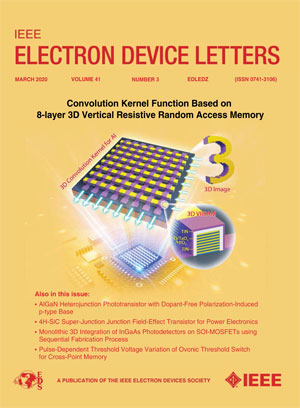一种双温度补偿模式局域压力传感器
IF 4.1
2区 工程技术
Q2 ENGINEERING, ELECTRICAL & ELECTRONIC
引用次数: 0
摘要
模式局域压力传感器具有灵敏度高、分辨率高的优点,得到了广泛的研究。然而,由于热应力的存在,它们也会受到温度波动的影响,但补偿方法尚未探索。本文提出了一种具有双温度补偿的模式局域压力传感器。阐述了输出信号的温度依赖性和补偿方法。被动方法和主动方法都被考虑,因为被动方法通常是获得有效主动补偿结果的基础。因此,传感器采用低应力键合技术封装,特别是金硅共晶键合。在无源补偿的基础上,利用静电力进一步减小热应力引起的幅值比输出误差。这种方法有效地将输出信号与温度解耦。在$- 20~^{\circ}$ C到$60~^{\circ}$ C范围内对传感器进行了测试,结果表明了所提补偿方法的可行性和优越性。本文章由计算机程序翻译,如有差异,请以英文原文为准。
A Mode-Localized Pressure Sensor With Dual Temperature Compensation Method
Mode-localized pressure sensors have the advantage of high sensitivity and resolution, making them being widely studied. However, they also suffer from the influence of temperature fluctuations due to the thermal stress, but compensation method has not been explored. This study proposes a mode-localized pressure sensor with dual temperature compensation. The temperature dependence of the output signal and the compensation method is elucidated. Both passive and active methods are considered, as passive methods typically serve as the foundation for attaining an efficient active compensation outcome. Consequently, the sensor is packaged using low-stress bonding techniques, specifically Au-Si eutectic bonding. On the basis of the passive compensation, electrostatic forces are also employed to further mitigate the errors in amplitude ratio output induced by thermal stress. This approach effectively decouples the output signal from temperature. The sensor was tested from $- 20~^{\circ }$ C to $60~^{\circ }$ C, and the results show the feasibility and advantages of the proposed compensation method.
求助全文
通过发布文献求助,成功后即可免费获取论文全文。
去求助
来源期刊

IEEE Electron Device Letters
工程技术-工程:电子与电气
CiteScore
8.20
自引率
10.20%
发文量
551
审稿时长
1.4 months
期刊介绍:
IEEE Electron Device Letters publishes original and significant contributions relating to the theory, modeling, design, performance and reliability of electron and ion integrated circuit devices and interconnects, involving insulators, metals, organic materials, micro-plasmas, semiconductors, quantum-effect structures, vacuum devices, and emerging materials with applications in bioelectronics, biomedical electronics, computation, communications, displays, microelectromechanics, imaging, micro-actuators, nanoelectronics, optoelectronics, photovoltaics, power ICs and micro-sensors.
 求助内容:
求助内容: 应助结果提醒方式:
应助结果提醒方式:


